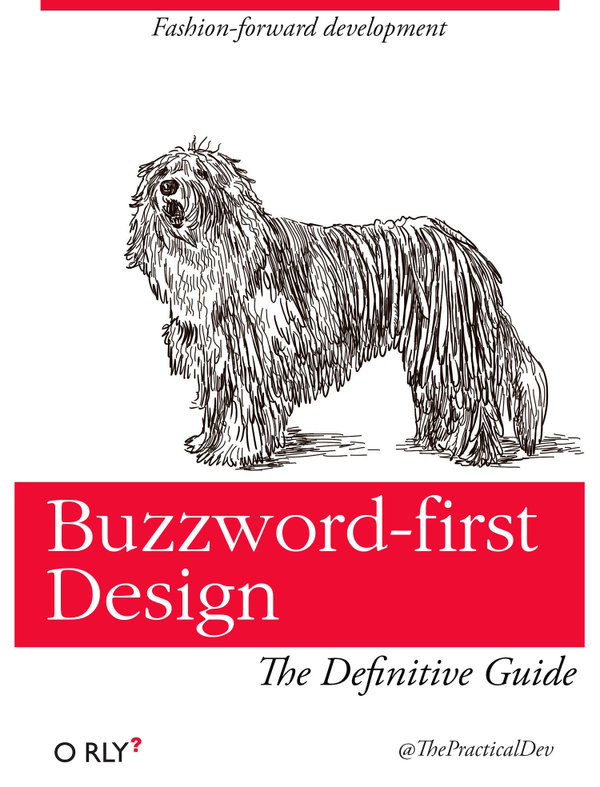
In the ever-evolving realm of software development, where trends come and go with the speed of a fleeting hashtag, there emerged a design philosophy so cutting-edge, it was destined to revolutionize the industry—or so its proponents claimed. This was the era of Buzzword-first Design, a time when fashion-forward development wasn't just a practice but a badge of honor.
The movement took root in the bustling metropolis of Techopolis, a city renowned for its gleaming skyscrapers of data and sprawling parks of open-source forests. Here, developers prided themselves on their adherence to the latest trends, with every coffee shop conversation and co-working space whiteboard brimming with discussions about the newest, shiniest tech on the block.
At the heart of this cultural shift was a visionary, known only as The Architect. With an eye for design and a mind attuned to the zeitgeist, The Architect proposed a radical approach: Why not start with the buzzwords? Why not design systems and applications with the primary goal of incorporating as many trending technologies and methodologies as possible?
"Blockchain!" cried one developer, eager to jump on the bandwagon. "Let's build a distributed, immutable ledger for...uh, tracking coffee consumption in the office!"
"Machine Learning!" shouted another, visions of algorithmic grandeur dancing in their head. "We'll predict exactly when the coffee will run out, ensuring optimal brewing times for peak productivity!"
And so, it went. Agile, Serverless, Quantum Computing—no buzzword was left behind. The projects became more elaborate, the dependencies more convoluted, and the documentation...well, who had time for documentation in such a fast-paced world?
The culmination of this movement was the development of The Ultimate Application, a project so ambitious it sought to encapsulate every trending technology of the day. The codebase was a labyrinth of functions and frameworks, each more obscure and "innovative" than the last. The application was touted as a solution to all of life's problems, from ordering food to solving the mysteries of the universe.
But as the launch day approached, a sense of unease settled over Techopolis. Developers began to question the usability of The Ultimate Application. Testers found themselves lost in a maze of features that, while impressive on paper, offered little in the way of practical utility. The public unveiling, once anticipated as the dawn of a new era, fizzled into a bewildering demonstration of over-engineered complexity.
In the aftermath, The Architect and their followers faced a reckoning. The allure of buzzwords, they realized, had led them astray from the fundamental principles of good design: simplicity, usability, and purpose. The Ultimate Application was not the future but a cautionary tale of what happens when style takes precedence over substance.
Thus ended the era of Buzzword-first Design in Techopolis. Developers returned to their drawing boards, newly humbled and wise to the pitfalls of chasing trends for the sake of trends. They learned to weigh the value of new technologies against the needs of their users, crafting solutions that were not only innovative but meaningful.
And so, the tale of "Buzzword-first Design: Fashion-forward Development" lives on as a reminder to those who navigate the ever-changing landscape of technology: while it's essential to stay abreast of new developments, the true artistry lies in knowing which tools to use and when, ensuring that the heart of design remains in solving real-world problems, not just in adorning them with the latest tech lingo.